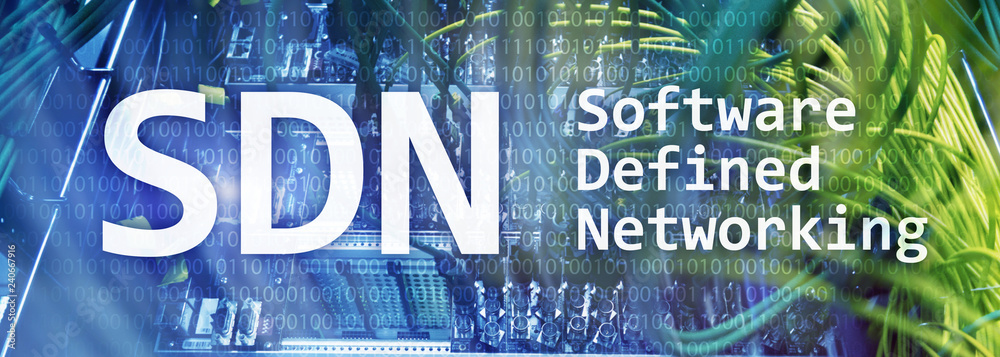Today’s businesses require speed, performance, and security to compete. Traditional networking infrastructures are outdated – backhauling traffic from branch offices to headquarters creates latency, leading to poor application performance and data vulnerability.(SD-WAN)
Instead, organizations need a simpler, more cost-efficient, and more agile network architecture. Enter SD-WAN.
Streamlined Management
In an age of remote work and ever-expanding cloud use, businesses cannot afford to waste valuable resources on outdated networking infrastructure. The good news is that Software-Defined WAN (SD-WAN) offers a new way to streamline traffic and strengthen network connectivity.
This is achieved through an overlay that connects branch locations to the cloud using cost-effective Internet connections instead of expensive MPLS circuits. This simplifies management, reduces costs, optimizes bandwidth utilization, and increases scalability.
SD-WAN also provides centralized control and management from a single interface. This simplifies network operations and enables IT teams to implement policies consistent across the entire network easily. This allows IT to identify and resolve issues quickly.
Unlike traditional WAN solutions, which backhaul all traffic to the corporate data center, SD-WAN prioritizes business-critical applications and offloads less-important internet traffic. This ensures critical apps have the needed performance without sacrificing the quality of service on non-critical internet connections.
While many IT managers are hesitant to rely solely on cheaper Internet connections, a modern SD-WAN solution can improve the quality of commodity circuits by implementing link-bonding and packet optimization features. This significantly reduces latency, jitter, and packet loss. Combined with a robust security framework, your internet connection will be able to handle more of the business’s workload and deliver a consistent level of performance.
Enhanced Security
SD-WAN enables enterprises to optimize cloud performance by reducing costs, increasing bandwidth efficiency, and providing significant performance improvements, especially for critical applications. It does so without sacrificing security and data privacy.
Just like a GPS device can find the fastest route home for you by taking
the most direct path rather than being rerouted around construction sites and slow traffic,
an SD-WAN provides your business with a more direct, efficient way to connect to your clouds. It uses a multiplexing technique to utilize cost-effective transport services (like broadband Internet) and reduces dependency on expensive MPLS links. This also reduces network latency and improves application performance.
provides a secure on-ramp to the cloud. It improves security by implementing policies at the edge, providing zero-trust access, and centrally managing this via a single interface. It combines security functions like firewalls, IPS, anti-malware, web filtering, and intrusion prevention into a single solution.
also provides enhanced visibility and control through centralized management and provides WAN optimization by routing applications according to their needs. This is done by identifying critical applications and prioritizing them over less-critical ones In addition, it supports local internet breakout for IaaS and SaaS applications so that they can be accessed from branch offices with low latency. This also helps to avoid the need for costly backhauling traffic from branches to headquarters.
Scalability
The demand for SD-WAN is growing because traditional enterprise WAN architectures aren’t meeting the needs of multi- and hybrid-cloud applications. In addition, these architectures can be costly to manage and support.
For example, legacy WAN architectures that use MPLS to connect branch offices and headquarters require backhauling data. This could be more efficient and cause application performance issues due to latency and packet loss. SD-WAN enables secure local internet breakout of SaaS and IaaS traffic from the branch office, increasing performance and reducing costs by eliminating backhauling.
SD-WAN provides an active, dynamic approach to WAN transport services by monitoring and steering traffic in real-time based on centralized policy. This helps to improve network resiliency, eliminates application downtime, and speeds up failover times. It can also overcome common issues like packet loss, jitter, and latency to ensure consistent quality of experience (QoEx) for users.
In addition, a business-driven SD-WAN can provide centralized management of multiple types of connections, including MPLS, broadband, and wireless WAN (4G/LTE) links. This can reduce costs by leveraging more affordable internet connections for critical applications and retaining MPLS for less critical or sensitive data. It can also help simplify network infrastructure and improve security by combining multiple functions such as routing, firewalls, segmentation, WAN optimization, and visibility into a single, unified platform.
Flexibility
As businesses embrace remote work and multi-cloud strategies, they need a flexible WAN. SD-WAN delivers this with the ability to automatically divert traffic when issues arise to reduce downtime and provide a better application experience.
Traditional WAN architectures backhaul all data between branch offices and headquarters, which is costly and inefficient. This also introduces latency and hampers application performance. SD-WAN solves these problems by enabling a more flexible network
that allows traffic to be routed over
the best available path – including broadband or wireless (LTE and 5G) connections which are far cheaper than MPLS links.
An early version of SD-WAN used link-bonding technology to combine multiple WAN connections, improving last-mile bandwidth. More recently, SD-WAN has evolved to use software to improve the quality of a commodity circuit by reducing latency, packet loss, and jitter. This saves money and provides a better quality of service for critical business apps, improving user application performance.
Rather than relying on hardware devices at each site, the most recent versions of SD-WAN use a simple cloud-based point-of-presence model to deploy and manage. This combines cellular, SD-WAN, and security into one device, which can be taken to branch offices,
trucks, vehicles, and other locations where employees need access to the network.

